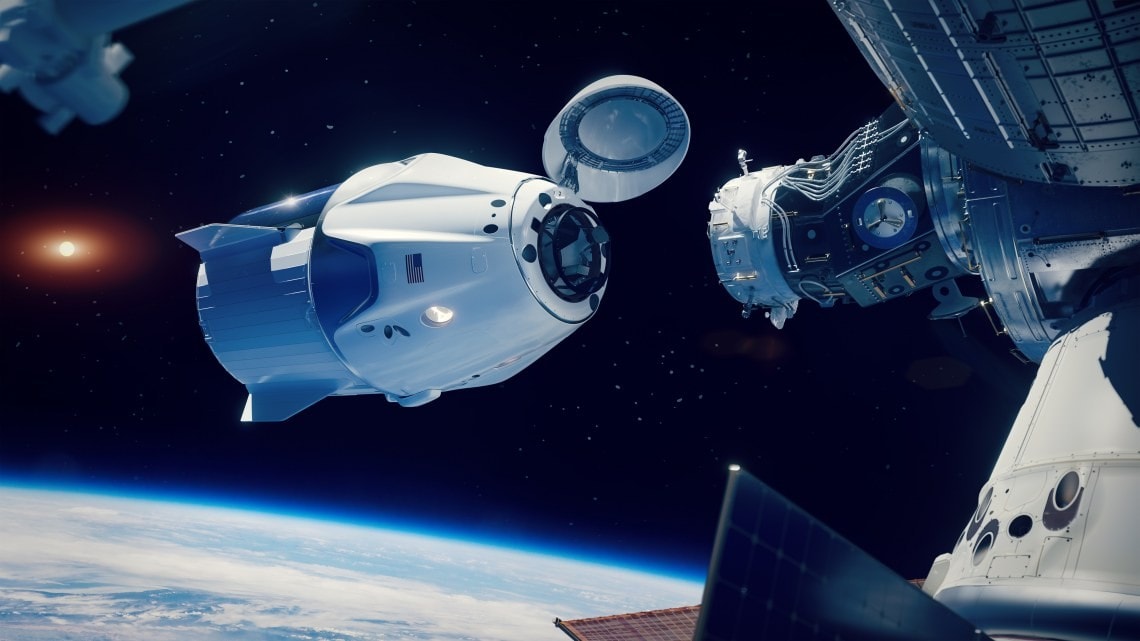Connecting an LX7720 to a Brushless DC Motor
This blog is the 6th in a series that discusses the implementation aspects of the LX7720 spacecraft motor driver. It breaks down the LX7720's major functions into circuit blocks and sub-blocks and explains how they work. This also explores the operation of sub-blocks and how they integrate into a motor drive system, helping designers to optimize their circuit designs.
As space system developers continually work to reduce the size, weight and power of key modules and elements, they also require higher-performance, radiation-hardened and radiation-tolerant components that enhance system designs. New technology–such as lighter, more highly integrated motor control circuits for satellites–can withstand extreme space environments and optimize spacecraft performance.
The LX7720 spacecraft motor driver is radiation hardened by design. It’s a companion Integrated Circuit (IC) to a space Field Programmable Gate Array (FPGA) such as Microchip’s RTG4 FPGA and RT PolarFireÒ FPGA, or a space microcontroller (MCU) such as Microchip’s SAMRH71F20 or SAMV71Q21RT. The integrated current sensing, resolver, encoder, and Hall effect encoder interfaces in the LX7720 reduce board space and weight while increasing reliability for closed-loop motor control using coil current feedback and rotor position sensing.
This is the 6th blog in an eight-part series that focuses on LX7720's motor driver and current sense circuits, starting with the theory of the blocks within the Field Effect Transistor (FET) driver and current sensing stages, followed by how to select external components, and finally practical implementation of brushless DC, bipolar and unipolar stepper motors. The topics in this series are:
1. Introduction to the half-bridge drivers and discussion of the charge pump approach used to generate independent gate supplies for each high-side N-channel Field-Effect Transistor (NFET)
2. Practical half-bridge driver stages using both standard gate voltage and low gate voltage NFETs
3. Introduction to the motor winding current sense amplifiers
4. Topology choices applying current sense amplifiers within a half-bridge stage
5. Separating a half-bridge into independent low-side and high-side drivers
6. Connecting an LX7720 to a Brushless DC Motor (BLDC) or Permanent Magnet Synchronous Motor (PMSM), with optional electromagnetic brake
7. Connecting an LX7720 to a bipolar stepper motor
8. Connecting an LX7720 to one or two unipolar stepper motors
The LX7720 contains four half-bridge drivers with floating current sense for motor coil driving, six bi-level inputs (comparators) for sensing Hall effect sensors and rotary encoders, and a complete resolver/LVDT interface with primary coil driver and secondary signal conditioning. Figure 1 shows a top-level block diagram for a typical motor drive system using the LX7720 and illustrates the benefit of integrating all the mixed-signal electronics for a closed loop motor driver within one IC.
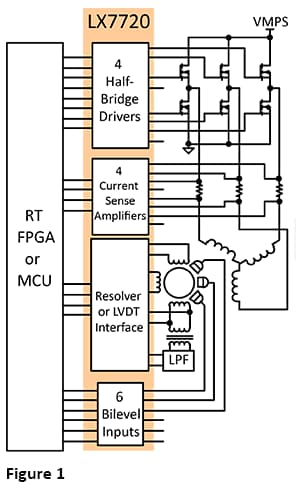
Figure 1. Typical Motor Drive System using LX7720
The previous blogs discussed the fundamentals of the LX7720's half-bridge stages and integrated current sensing. This blog discusses using the LX7720 with brushless DC motors.
The LX7720 contains four half-bridge driver stages and four current sense amplifiers, which is enough to drive a three-phase PMSM or Brushless DC Motor (BLDC). PMSM and BLDC are both permanent magnet-based motors with the permanent magnets on the rotor. The stator contains equally spaced wye- or delta-connected windings, three for a three-phase motor. PMSM and BLDC motor design varies in detail, and also in drive waveform (sinusoidal vs. trapezoidal/triangular). However, the basic architectures are the same as far as the half-bridge driver stages are concerned.
Figure 2 shows a generic three-phase motor being driven by three half-bridge drivers with current sensing in each phase drive output. The motor is shown with a wye (or star) stator winding type, but the connections to a motor with a delta stator winding are the same.
The LX7720 circuitry is shown simplified, with supplies and decoupling to the current sense and gate drive sections omitted. The key components are the three half-bridges and the current sense.
All three winding drivers are shown with current sensing in the phase outputs. However, since current entering one phase has to exit via the other two phases, only two current senses are required. The third phase current is calculated from the sum of the other two and can be measured instead to provide redundancy, if required.
The half-bridge FETs are shown with their integral body diodes. Diodes in parallel with the FETs are necessary components to carry commutation currents when a half-bridge FET switches off. Commutation of the current flow after FET switch-off is discussed in the 4th blog. The FET body diodes are often paralleled by discrete diodes for higher switching speed and lower voltage drop. Motor winding currents flow between the motor supply VMPS and the motor ground MGND through some combination of half-bridge FETs and/or commutation diodes in parallel with the FETs.
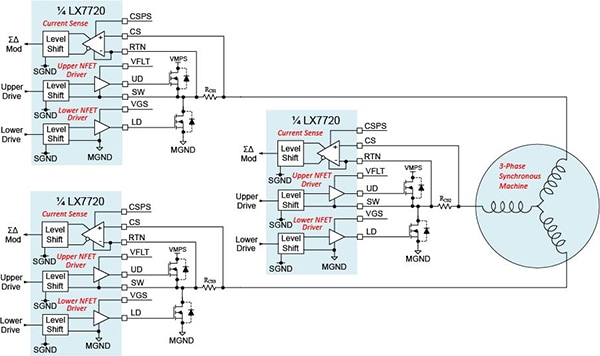
Figure 2. 3-Phase Motor Driver with Phase Output Current Sensing
The LX7720 uses two internal ground domains, shown in Figure 2 as the Signal Ground (SGND), and the Motor Ground (MGND). SGND is used for the digital and analog signals (the control circuitry). MGND is used for circuitry associated with the external half-bridges - the FET drives, current sensing, and the motor load itself. The level shifters manage the crossing of the ground domains.
If a motor controller board design locates the motor drive power section - the half-bridges and commutation diodes - on the same PCB as the LX7720, then the two grounds SGND and MGND should be joined together directly on the PCB, and therefore will be at the same potential (Figure 3).
Figure 3. Connecting the LX7720's Two Ground Domains, SGND and MGND

For high power motor designs, it can be more practical not to route the VMPS high voltage and/or high current paths on the controller PCB. In this case, the power switching components will be on a separate module or PCB, usually near the motor (Figure 4). With this separated architecture, the motor supply VMPS and its associated power ground return PGND take a separate path to the half-bridge FETs via a wiring harness.
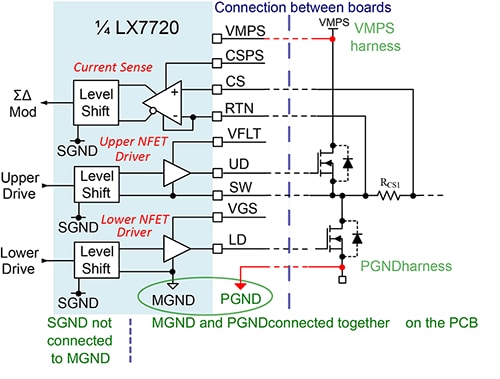
Figure 4. Connections with Separated Motor Ground
The LX7720 still needs a connection to the motor supply VMPS, because this is a reference for the high-side FET drivers as discussed in the 1st blog. The LX7720 also has access to the half-bridge drivers' ground. These two signal interconnections are shown in red in Figure 4. Note that now SGND is not directly connected to MGND but relies on the system ground path external to the PCB that the LX7720 is on. However, since the motor's power wiring is carrying the high current motor waveforms, there will be ground bounce between PGND/MGND and the LX7720's signal GND, SGND. The allowed potential difference between MGND and SGND is -10V to +8V. If analysis of the end system shows that this might be exceeded during transients, a back-to-back zener diode pair between SGND and MGND may be enough to clamp these occurrences (Figure 5).
Figure 5. Clamping SGND and MGND with Back-To-Back Zener Diodes

Synchronous motors are also available with more than three phases. Since the half-bridge and current sense stages are independent within an LX7720, multiple LX7720s can be used together to control a motor with more than four phases.
In the case of a three-phase motor, the LX7720 offers one spare half-bridge stage. The 5th blog discussed separating a half-bridge into independent low-side and high-side drivers with optional current sensing. However, loads such as solenoids or an electromagnetic brake are often driven with a Pulse Width Modulated (PWM) waveform to regulate current and therefore mechanical force. The PWM timing can then be adjusted on a cycle-by-cycle basis by monitoring the rise and fall of output current in the inductive load.
When the load switch turns off, a diode is needed to provide a path for the inductive load to ramp down. The circuit in Figure 5 shows a low-side driver with high-side current sensing. All load current passes through the current sense circuit, whether ramping up through the FET when the switch is on or ramping down through the diode after the switch is turned off.
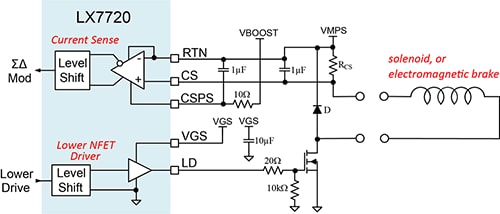
Figure 6. Low-side inductive load driver with current measurement
The alternative configuration shown in Figure 6 is a high-side driver with low-side current sensing. The current sense could be performed instead by a spare ADC input if available in the system. In that case, two load drivers can be built with just one spare LX7720 half-bridge section, reserving the LX7720's current sense block for the low-side driver.

Figure 7. High-side inductive load driver with current measurement
These two drivers have two disadvantages. Firstly, two wires are required to connect the load. Secondly, the diode, D, is relatively lossy. Both these limitations go away by simply using the complete spare half-bridge to drive the load, with current sensing positioned in the output (Figure 8). The high-side FET drives the load, and the low-side FET operates as an active diode. The extra half-bridge is configured the same way as the other three used for the motor, as shown in Figure 2, perhaps with detail differences in the power components.
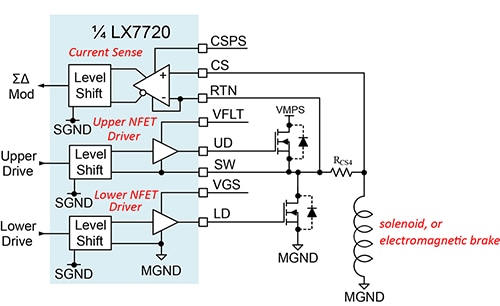
Figure 8. Half-bridge inductive load driver with output current measurement
There is one caveat to bear in mind. The VGS gate drive supply pins and VMPS motor supply pin are common to all four half-bridges within an LX7720. This means that the solenoid or electromagnetic brake must use the same VPMS and VGS supplies as the motor with three alternative circuits.
Finally, Figure 6 shows how to connect either an unused half-bridge driver or current sense amplifier.
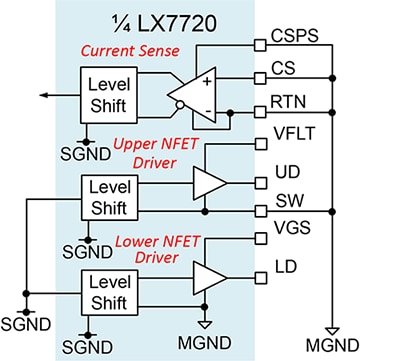
Figure 6. Connections for an Unused Half-Bridge Driver and/or Current Sense
Section 5: Next steps —Conclusion
You should now understand how to connect an LX7720 to a BLDC or PMSM, and how to use the 4th half-bridge stage to drive a solenoid or electromagnetic brake. The next blog in this series will discuss connecting an LX7720 to a bipolar stepper motor.
Learn more about the LX7720 and other radiation-hardened mixed signal ICs
Read other parts of this series:
Part 2: Practical half-bridge driver stages using both standard gate voltage and low gate voltage NFETs
Part 3: Introduction to the motor winding current sense amplifiers
Part 4: Topology choices applying current sense amplifiers within a half-bridge stage
Part 5: Separating a half-bridge into independent low-side and high-side drivers
Part 7: Connecting an LX7720 to a bipolar stepper motor
Part 8: Connecting an LX7720 to one or two unipolar stepper motors
